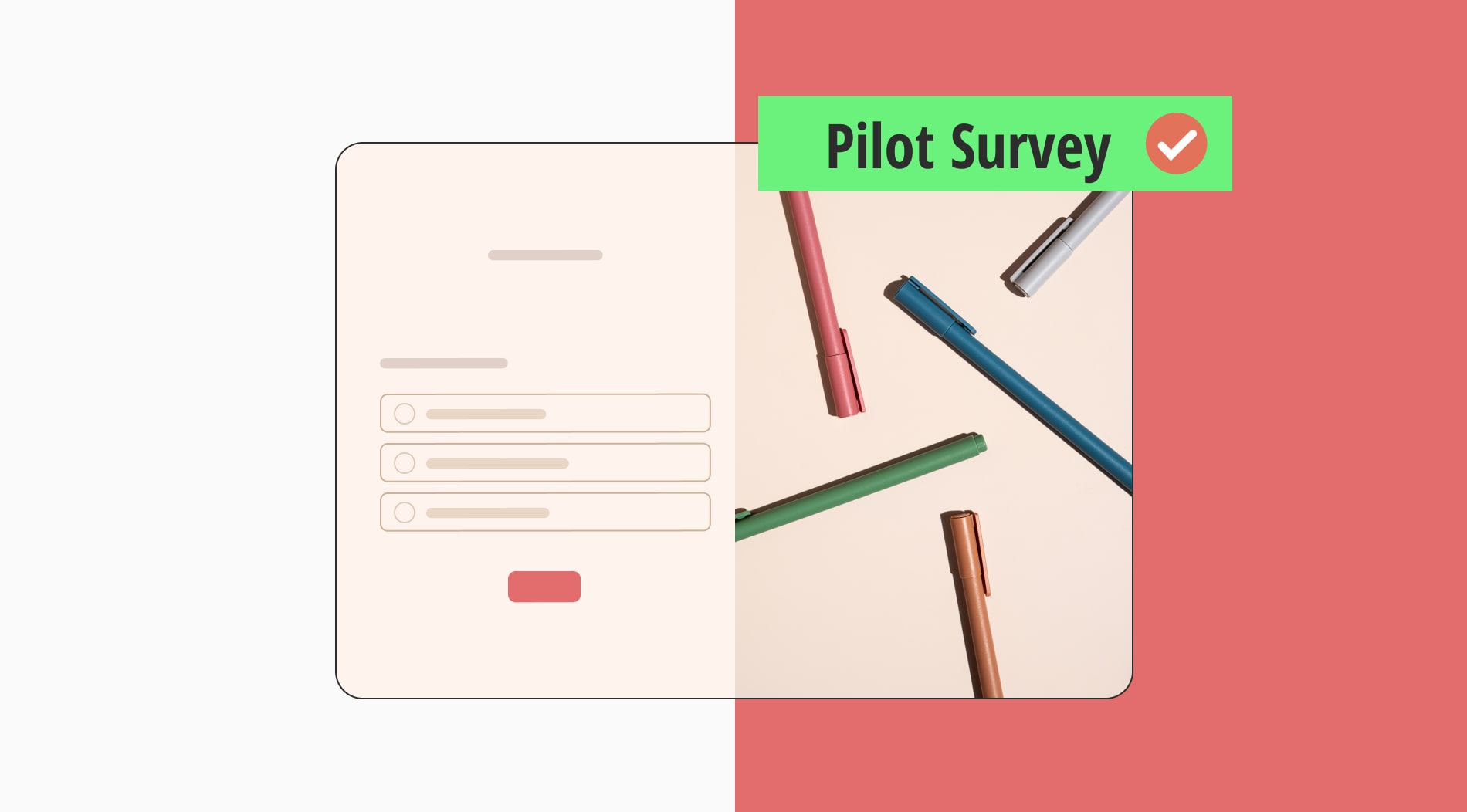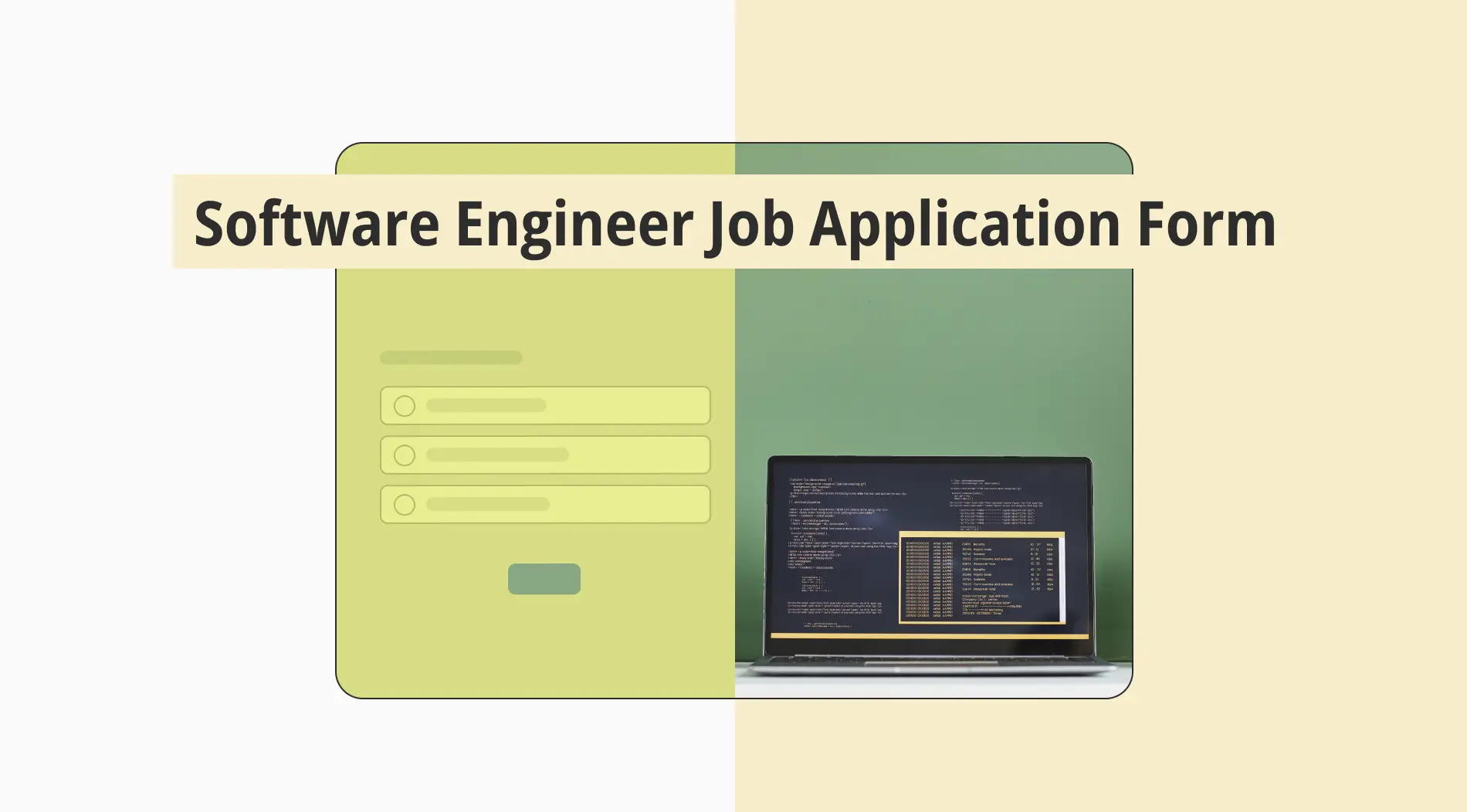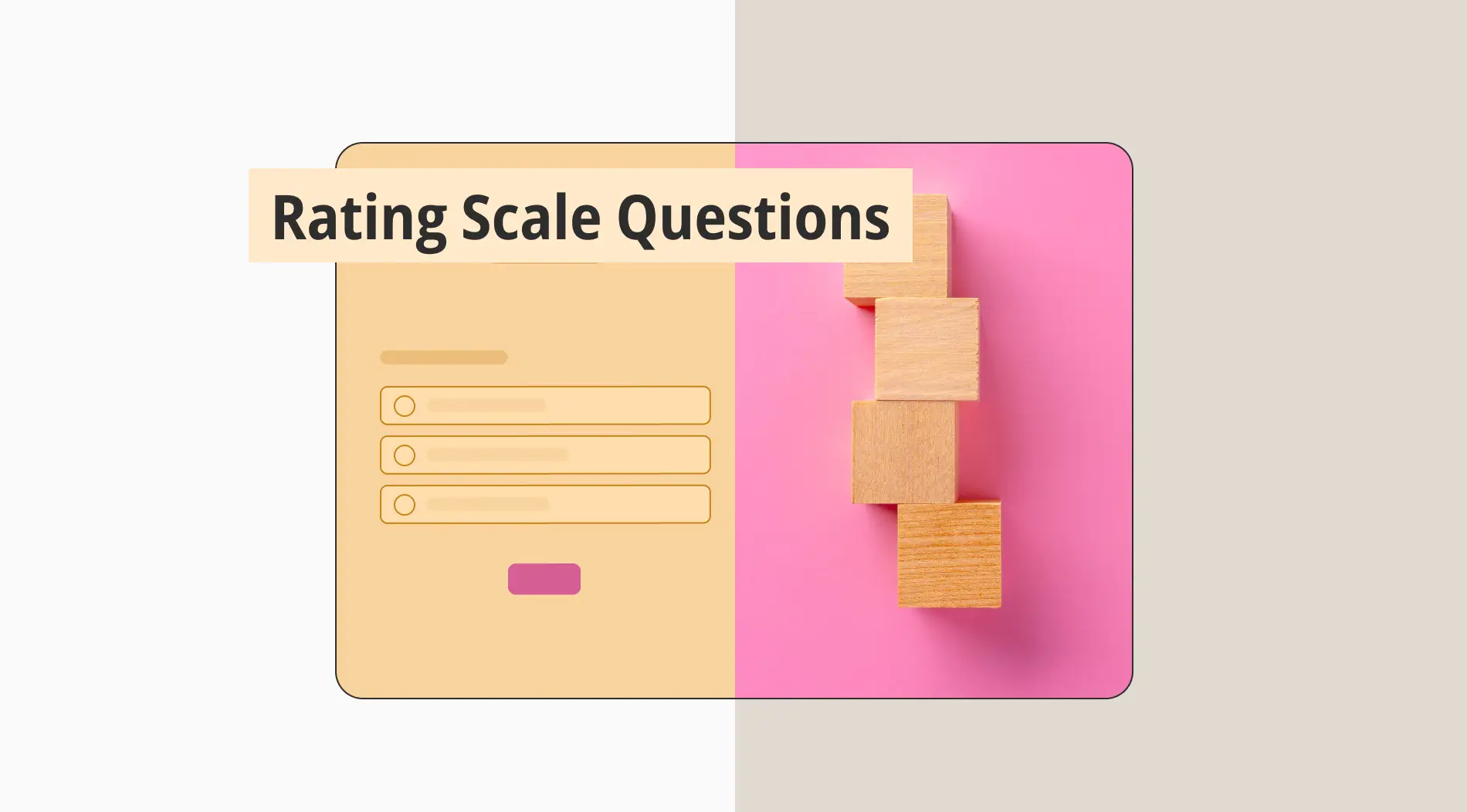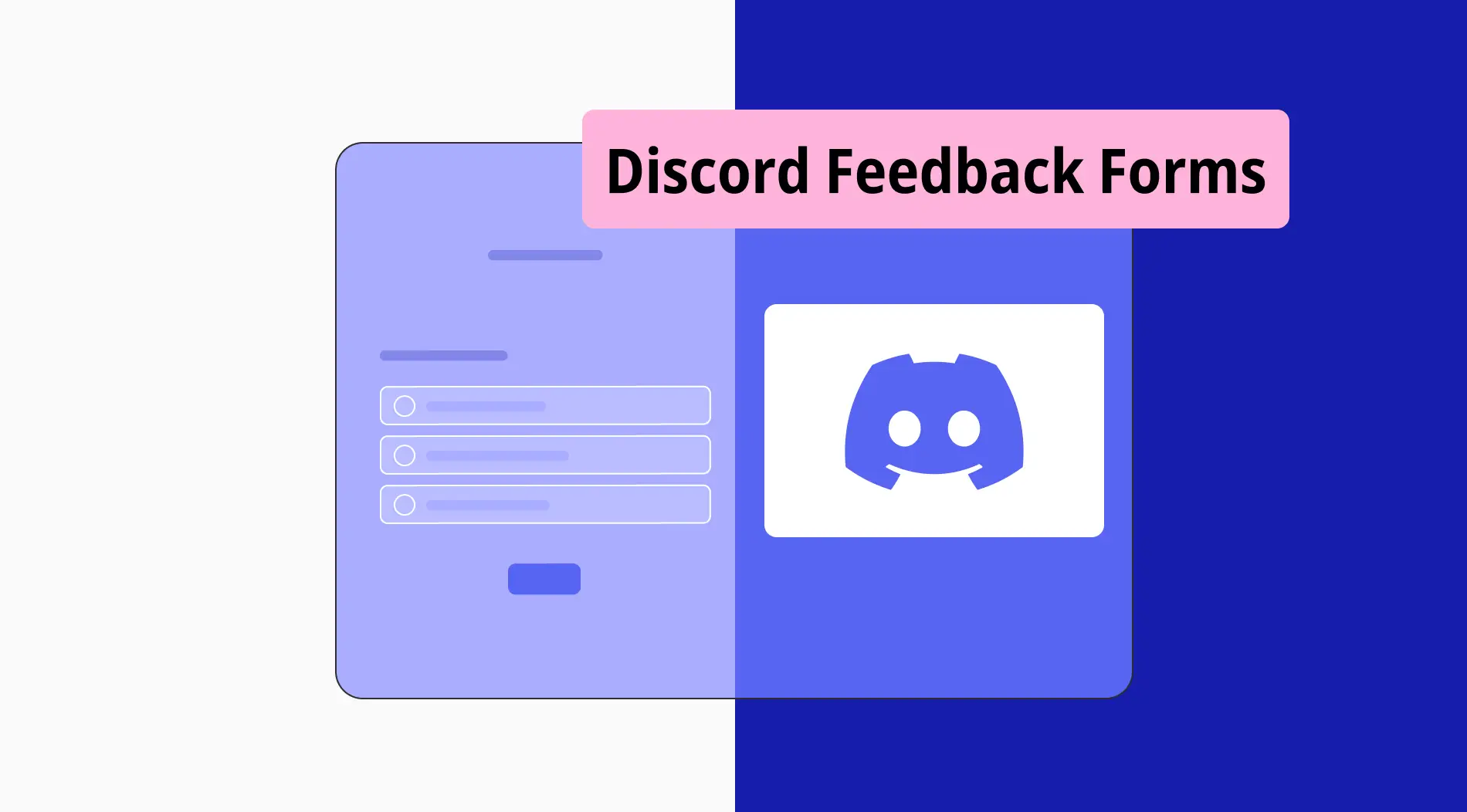Are you tired of finding small or big errors after conducting your surveys? Then, the solution is straightforward. You can test your survey through pilot surveys before sending your actual survey. This way, you can detect possible problems, make the necessary improvements, and share your survey with your target audience.
In this article, we talk about the pilot survey's meaning, the situations in which they are used, and their advantages. You can also find 15+ questions you should ask in a pilot survey and why you should ask this question. We cover how to create a pilot survey and tips for creating a pilot survey like a pro.
What is the pilot survey?
A pilot survey is a sample survey conducted with a small group to determine and test whether the survey you have prepared is understandable.
You can reach a small but relevant subgroup of your target audience and collect feedback regarding your survey. Based on the feedback you receive, you can identify problems and make the necessary improvements in your research.
When to use a pilot survey
You can often use the pilot surveys to test questionnaires in research projects and data collection projects. You can test your survey tool's suitability, validity, and reliability using these surveys. There are many situations where using pilot surveys is useful. Below, you can see a few of them:
1. Test your survey questions and Length
You can evaluate the understandability and clarity of your questions. You can also determine whether the answer options are relevant to your questions and whether the survey's course is logical. You can ask how long it took them to complete the research and optimize the survey length according to the results you get.
2. Evaluating logistics and Technical issues
It allows you to identify logistical challenges such as timing, delivery method, or accessibility. It also helps you identify potential technical issues that may prevent your participants from completing the survey. This way, you can develop strategies to solve problems and challenges based on your survey results.
Why to use a pilot survey
Pilot surveys allow you to identify any issues with your study before directing it to your target audience. You can direct your central survey to your goals by making the necessary adjustments in line with the results you obtain. This way, you can get more reliable results from your research. Below, you can see other advantages of pilot surveys:
- It provides solutions to problems that will affect the actual survey. A pilot survey reveals negative results.
- It provides process and financial savings by collecting information cost-effectively in the long run.
- The pilot survey determines the adequacy of the information and solution method for the research subject.
- It is a method that offers options to collect the most permanent and accurate results.
- It allows using different methods and research steps to improve the research so that you can ultimately make changes.
- It provides the opportunity to discover new ideas before starting research.
- Provides feedback to help the data research process proceed successfully.
15+ Essential questions for a pilot survey questions
You should carefully select the questions you will include in pilot surveys. The questions you ask allow you to identify potential problems with your survey's technical, content, and design areas. Below, we've included 15+ questions you can ask in a pilot survey and why you should ask them.
1. How did you arrive at this survey?
This question can help you determine which sources your participants accessed the survey through. It will also help you decide which distribution methods effectively reach your target audience. Based on the results you obtain, you can work on distribution channels to increase the reach and effectiveness of your primary survey.
- I received an email invitation
- I saw a social media post
- I clicked on a link on a website
- I was directed to it after completing a purchase
- I was asked to participate by a friend or family member
- I received a phone call asking me to participate
2. Is your privacy respected and protected?
By asking your participants this question, you can learn what they think about your survey's privacy practices and determine their comfort level in answering the survey. Based on the results, you can take the necessary confidentiality measures to build trust in your participants and offer anonymity to ensure comfort.
3. Were the answer options clear and relevant to the questions?
Through this question, you can evaluate the relevance of your survey questions to the answer options. You can measure the clarity of the answer options and whether your participants understand them. You can improve your answer options' clarity, openness, and effectiveness based on your feedback.
4. Did you find any of the questions intrusive?
Using this question, you can evaluate whether any question in your survey is disturbing based on the sensitivity level of the participants. This way, you can identify questions your participants consider personal or intrusive. Based on your findings, you can remove questions that make participants uncomfortable from your survey.
5. Were there any terms you did not know in the survey?
This question allows you to evaluate how your participants feel about the understandability of the terms included in your survey. Participants can report terms they do not understand through their answers to this question. So, you can make the necessary improvements to make these terms more transparent.
6. Do you fully understand the purpose of the study?
This question allows you to assess whether your participants understand the purpose of your study. It will help you determine whether your participants adequately understand the purpose of your survey. Based on your results, you can improve your survey to suit your purposes better.
7. Did the survey flow logically from one question to the next?
By using this question, you can find out what your participants think about the flow and logical consistency of your survey questions within the survey. You can use the information you obtain in line with the feedback to provide a more understandable flow to the questions you include in your survey and improve your survey strategically.
8. What did you encounter any difficulties while navigating the survey?
You can evaluate the user experience of your participants through this question in your survey to determine if there were any difficulties they faced in answering your survey. In line with the results you obtain, you can develop studies that will address the problems you have identified.
- Technical difficulties with the survey website
- Confusing survey questions
- Difficulty understanding the purpose of the survey
- Trouble accessing the survey on a mobile device
- Issues with the survey loading properly
- Difficulty submitting responses
- Problems with the survey format or layout
9. How would you rate the survey design?
It allows you to find out what your participants think about your survey's overall design and effectiveness. You can determine whether your survey design meets your participants' expectations. In line with the feedback, you can design and improve the survey design to meet the participants' expectations.
- Excellent
- Good
- Fair
- insufficient
- Needs Improvement
10. What is your preferred survey-sharing option?
This question can help you learn the survey-sharing option your participants prefer. For example, participants may want to access the survey link via e-mail, social media, or application. You can increase the participation rate by sending your survey through the participants' preferred distribution channels with the results you obtain.
- Social media
- QR code
- Website link
- Text message
- Printed flyer
- Online forum
- Mobile app
11. Was the survey format (online, paper) suitable for you?
Using this question, you can understand the survey format your participants prefer and evaluate their satisfaction with the format you direct. It will help you determine the format that is more accessible to your participants and choose the format you have specified for your primary survey. It will also increase your participants' survey response rate.
12. How long did it take to complete the survey?
With this question, you can find out how long your participants took to complete your survey. It allows you to find out what your participants think about survey length. Based on the results you obtain, you can make the necessary abbreviations.
- Less than 5 minutes
- 5-10 minutes
- 10-15 minutes
- 15-20 minutes
- More than 20 minutes
13. How likely are you to recommend this survey?
This question can help you evaluate the likelihood of your participants recommending your survey to others. If your participants are likely to recommend the study, it may mean that the satisfaction level your survey generates among the participants is high. Thus, you can develop strategies to increase the satisfaction rate with the results you obtain.
- Definitely would recommend
- Likely would recommend
- Might recommend
- Unlikely to recommend
- Definitely would not recommend
14. How satisfied were you with the survey experience?
With this question, you can directly measure your participants' general satisfaction with the survey experience. The results you obtain show the success and efficiency you achieved in your survey. Based on the results, you can determine the areas where you need to improve your survey and take the necessary action.
- Very satisfied
- Satisfied
- Neutral
- Dissatisfied
- Very dissatisfied
15. Please provide suggestions that help us make our survey better.
This question offers your participants an open space to express their opinions and suggestions. If your participants are not satisfied with anything other than the questions, they can express it through this question. In this way, you can learn about potential problems that may arise other than the questions you have included and develop a strategy accordingly.
How can I create a pilot survey?
You just learned about 15+ questions and why you need to ask them in your pilot survey. Now, it's time to learn how to create a pilot survey in the forms app. By following the 6 steps below, you can create your own pilot survey and increase the efficiency of our primary survey.
Step 1: Log in or sign up for forms.app
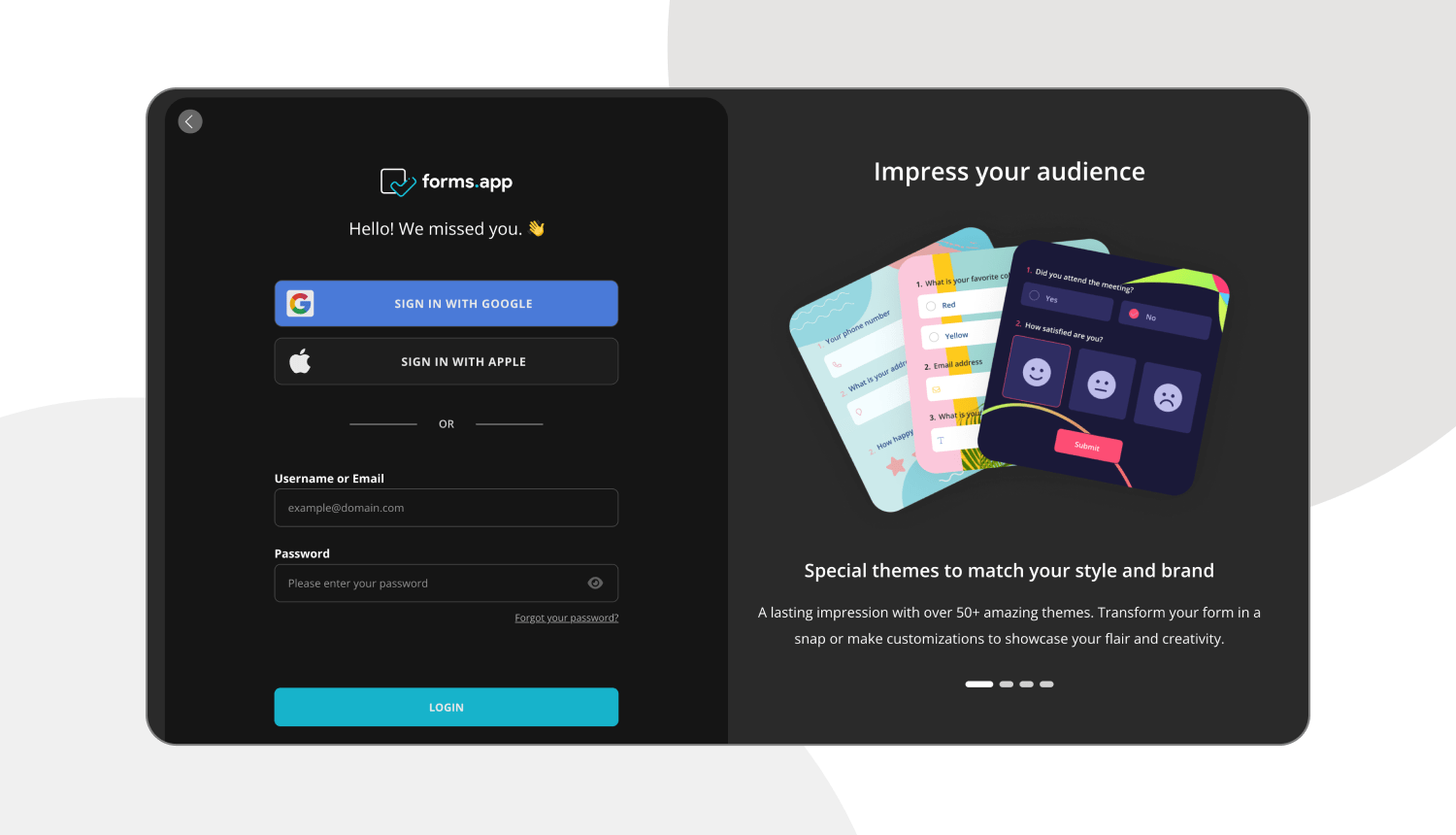
Log into your account
You can create your pilot survey by signing up for an account using the forms app. This process takes seconds. You can go directly to the platform if you already have an account. Apart from these, the forms.app allows you to log in using your Google, Apple, or Facebook accounts.
Step 2: Start from scratch, choose a template, or generate with AI
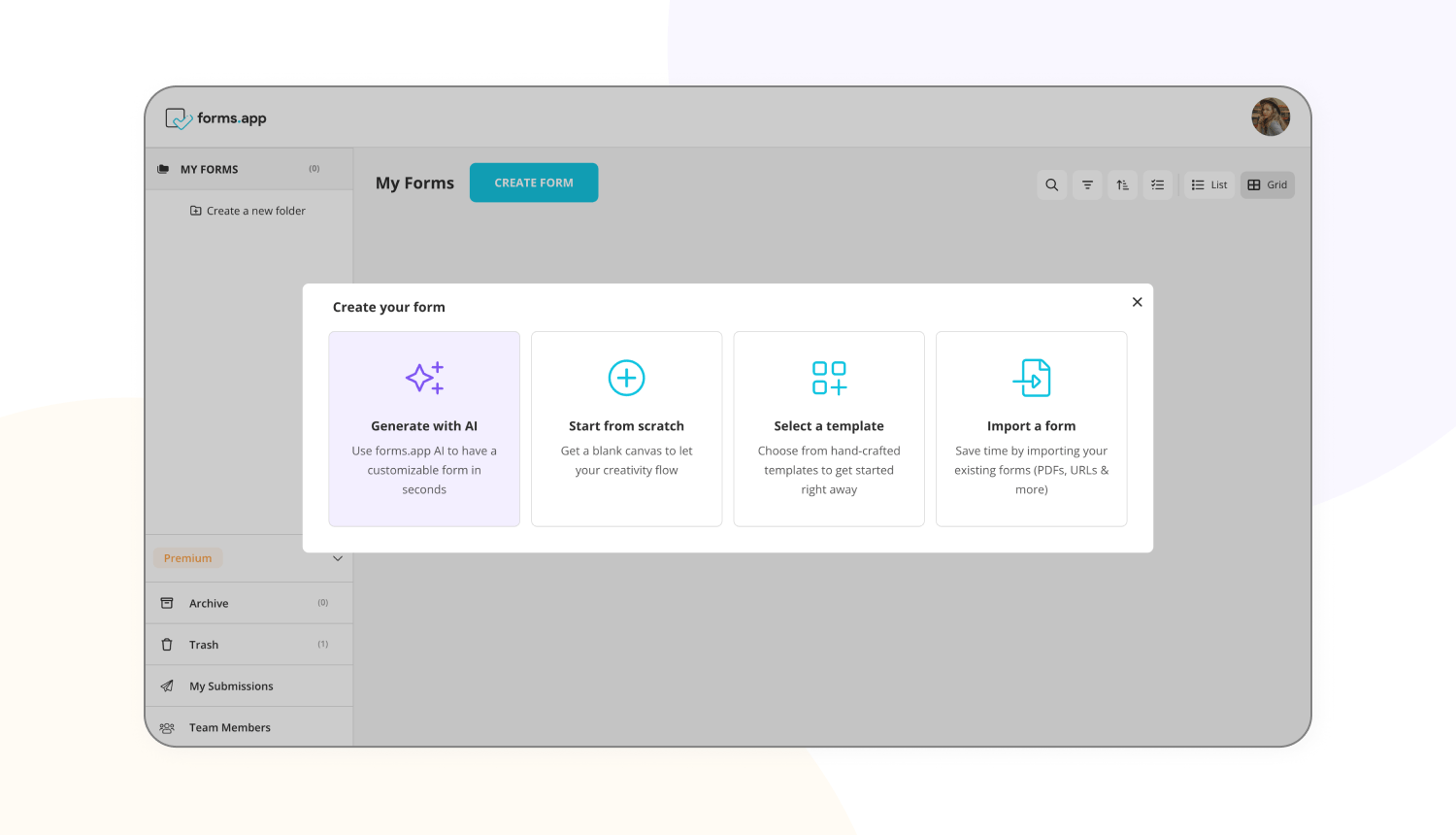
Choose a way to start
Once logged in, click the Create Form button to create a new form. You can create your pilot survey for free according to your goals. You can also choose from ready-made survey free templates on the forms.app. Also, you can get help from forms.app AI for creating your survey.
Step 3: Add your questions
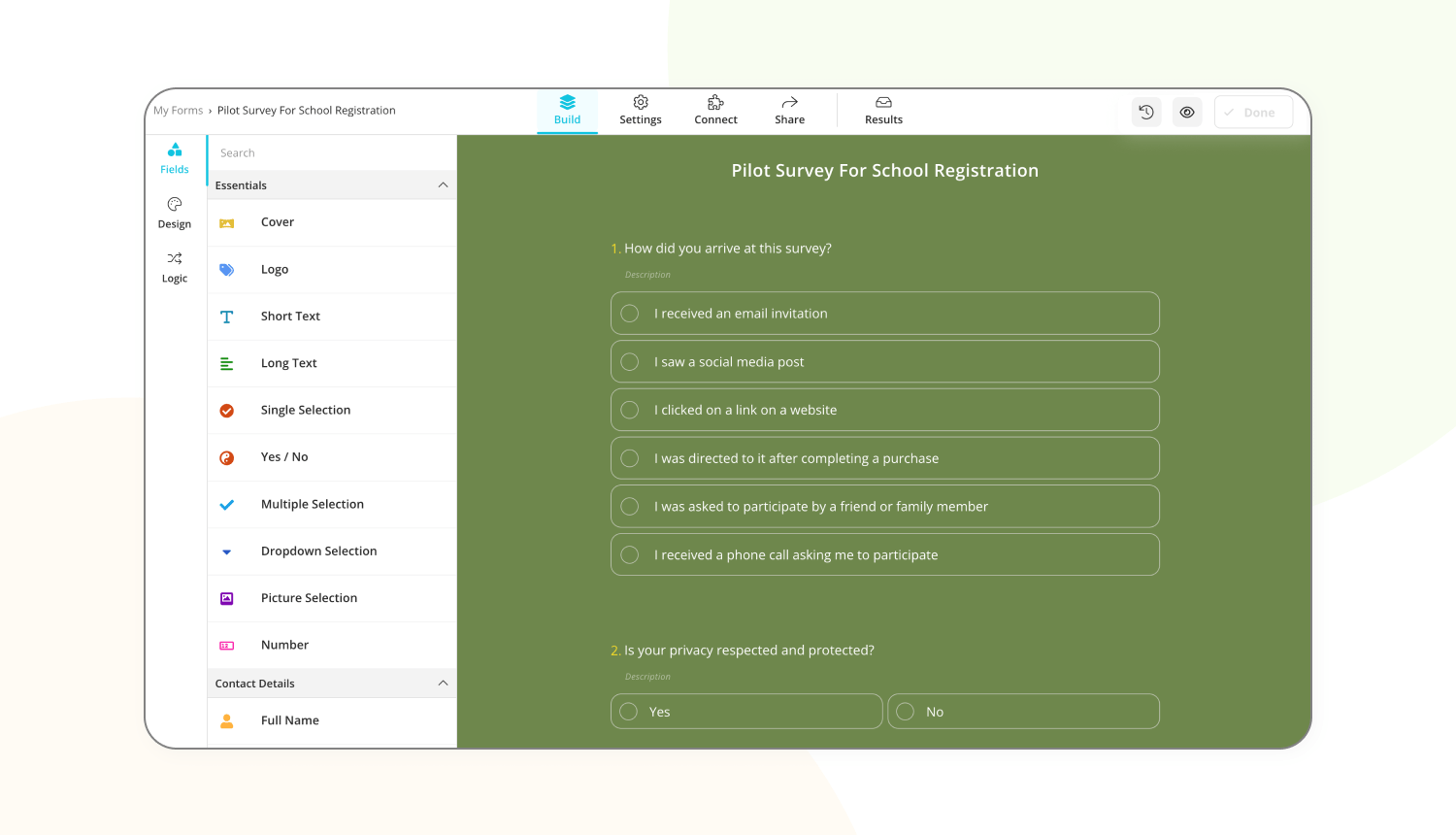
Add your survey questions
Once you choose a template according to your goals, you can add your pilot survey questions in line with them. The forms.app offers a variety of question types, such as multiple-choice, short-answer, and long-answer. Combining question types helps you better understand your participants.
Step 4: Customize your form design
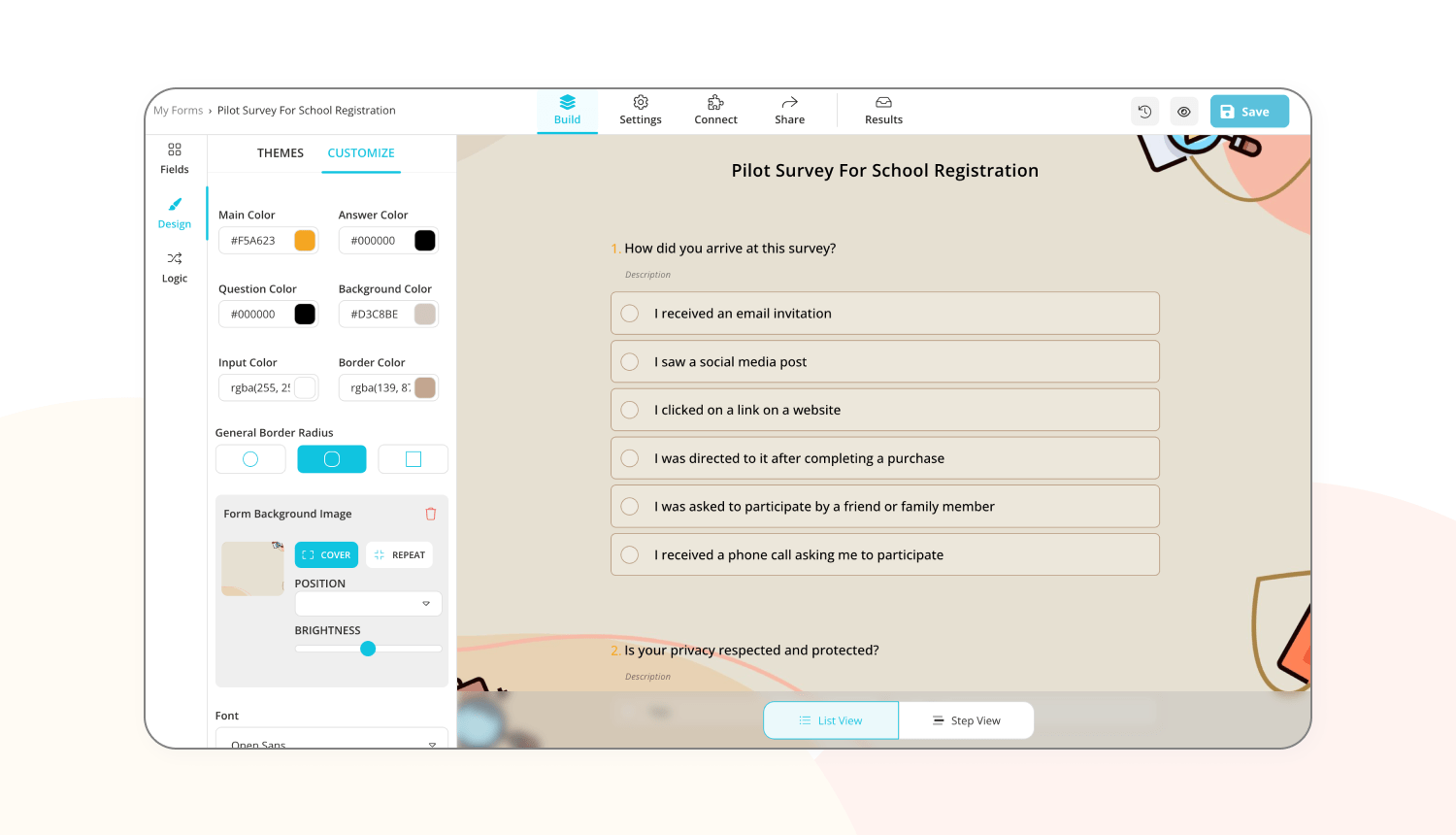
Customizing the design of your survey
Once you have added all the questions, you can easily select a theme and change colors. You can also choose your form images, logo, and cover. You can tailor colors, fonts, and other overall design tools to create a survey that mirrors your company's identity company's. Finally, you can choose a new background image and a view type.
Step 5: Share your survey
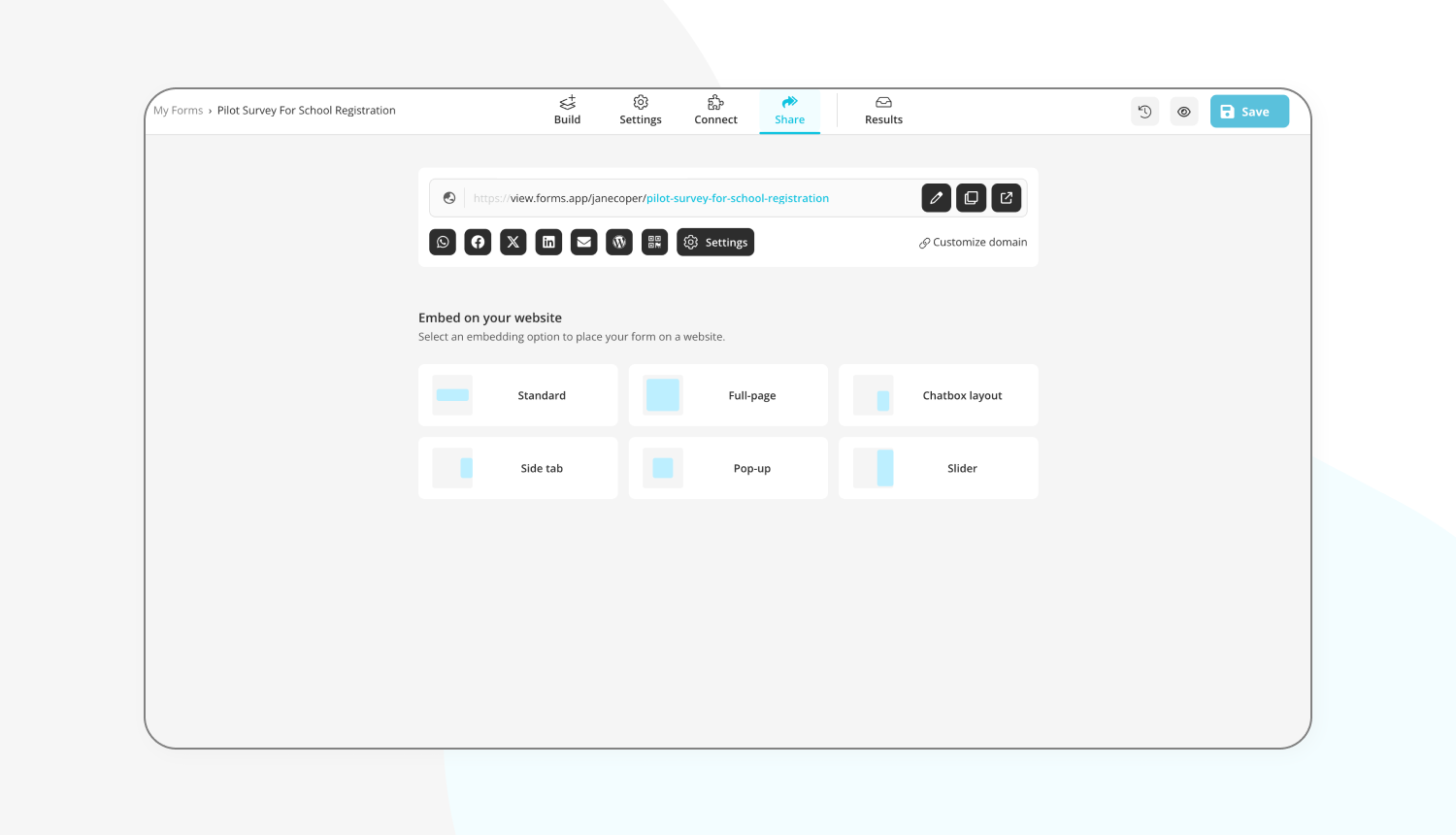
Share your survey
You can use sharing options to distribute your survey to your target population. Forms.app provides various sharing options. You can share your survey on popular social media platforms like Facebook, Twitter, LinkedIn, and WhatsApp. You can also embed survey questionnaires on your website or use QR codes.
💡You can prefer online surveys to save participants time and effort in answering the questions, which can save you time and money.
Step 6: Analyze the results
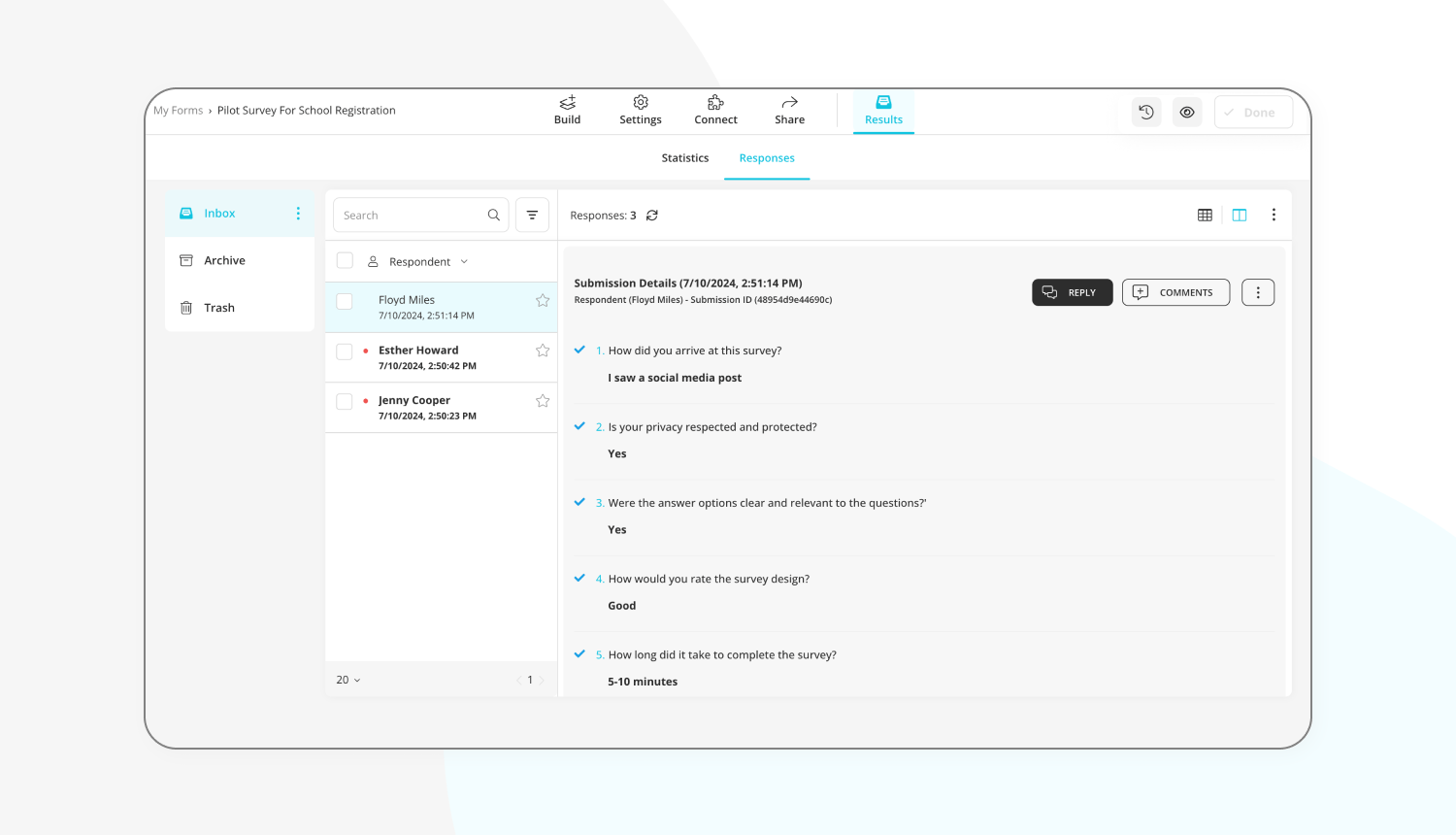
Analyze your results
Once you have gathered sufficient data, you can use the forms.app’s features, characteristics, and filters to analyze survey results. Analyzing the pilot study results will help you craft a strategy that aligns with your targets. Now, you can effectively send your survey to your target audience.
7 tips for creating a pilot survey like a pro
Like every research study, pilot testing has subtleties that should be addressed. Below, we've included 7 tips for creating a pilot survey like a pro. You can also apply these tips to your survey and achieve more successful results.
- You need to define the aims and objectives of your survey clearly. Clear goals allow you to develop questions and choose your primary audience.
- To increase participants' access to and convenience in your survey, you should make your survey as a convenience mobile-friendly.
- You must choose the correct research method, considering availability, budget, and more.
- You must determine the sample size you want for your survey. A specific target audience provides more accurate results.
- Offering privileges such as gift cards, discounts, and promotions to your survey customers will increase response rates and make it easier to collect feedback.
- To convenience sample, keep the survey short and ask easy-to-understand questions. So you can increase the survey participation rate.
- It is a good idea to thank your participants by emphasizing the importance of their contributions to make them feel valued.
Conclusion
If done correctly, pilot surveys offer significant advantages in testing your research from many perspectives. Through these surveys, you can identify areas of our study that need improvement. By making the necessary improvements in this direction, you can share your original survey with your target audience, increasing the effectiveness and efficiency of your survey results.
In this article, we defined the pilot survey. We talked about its advantages and the situations in which it is used. We also provided 15+ pilot survey examples of questions you should ask in a pilot survey and why you should ask them. Finally, we covered creating a pilot survey and gave tips for making one like a pro.
Işılay is a content writer on forms.app. She is passionate about advertising. This passion comes from the fact that she likes to make things interesting for people. She loves reading and writing. Işılay specializes in marketing, survey types, and program management.
